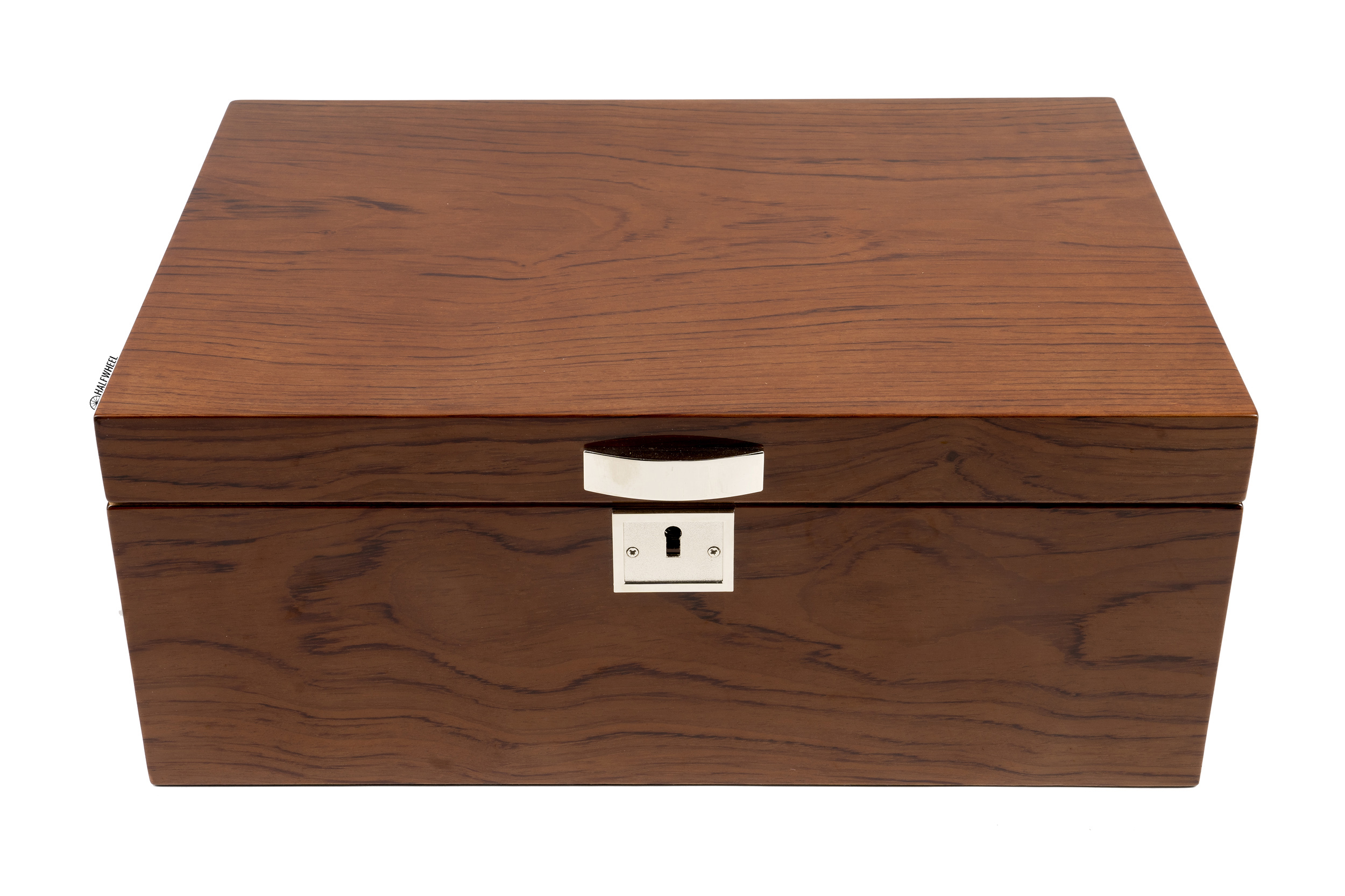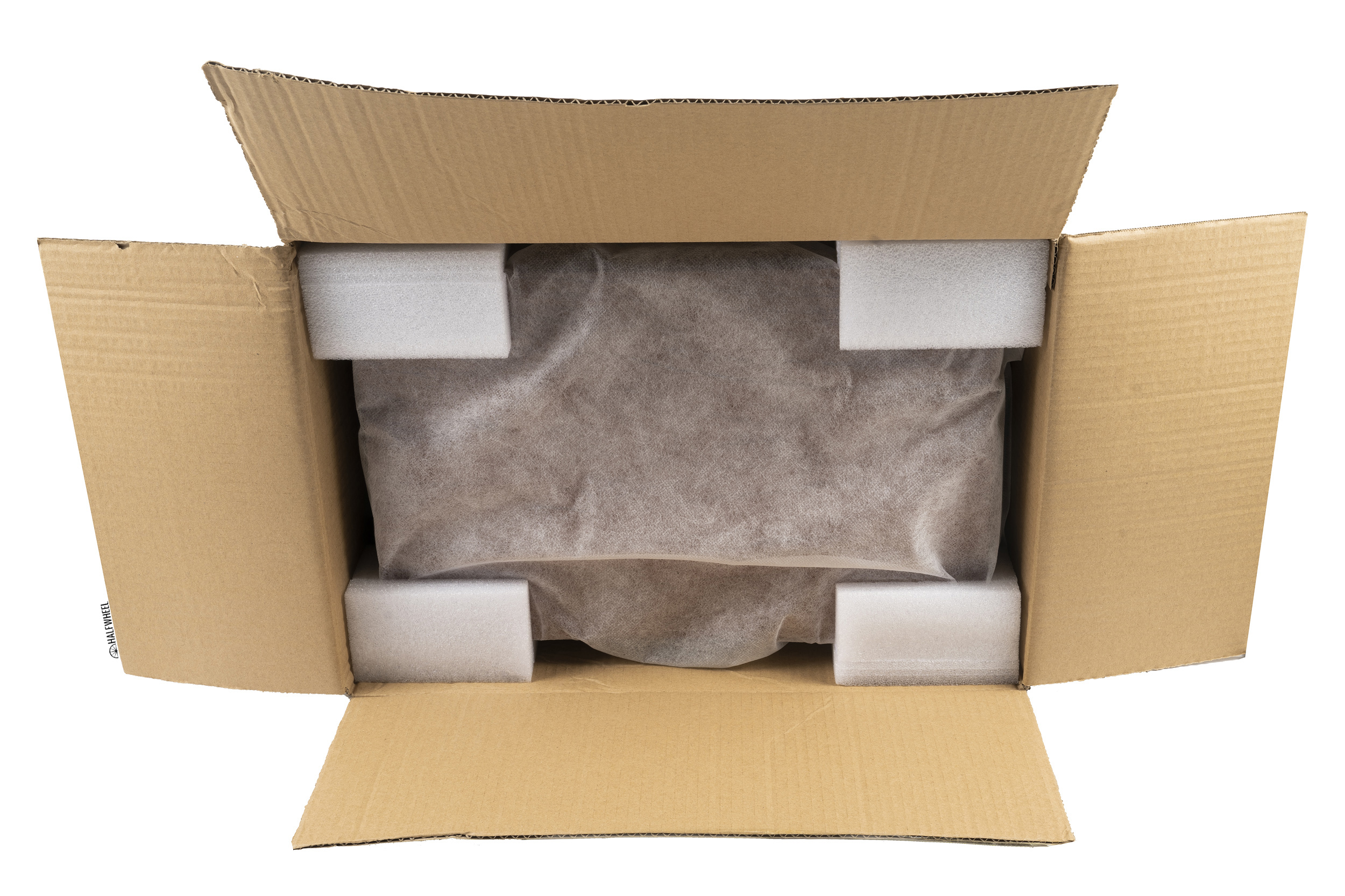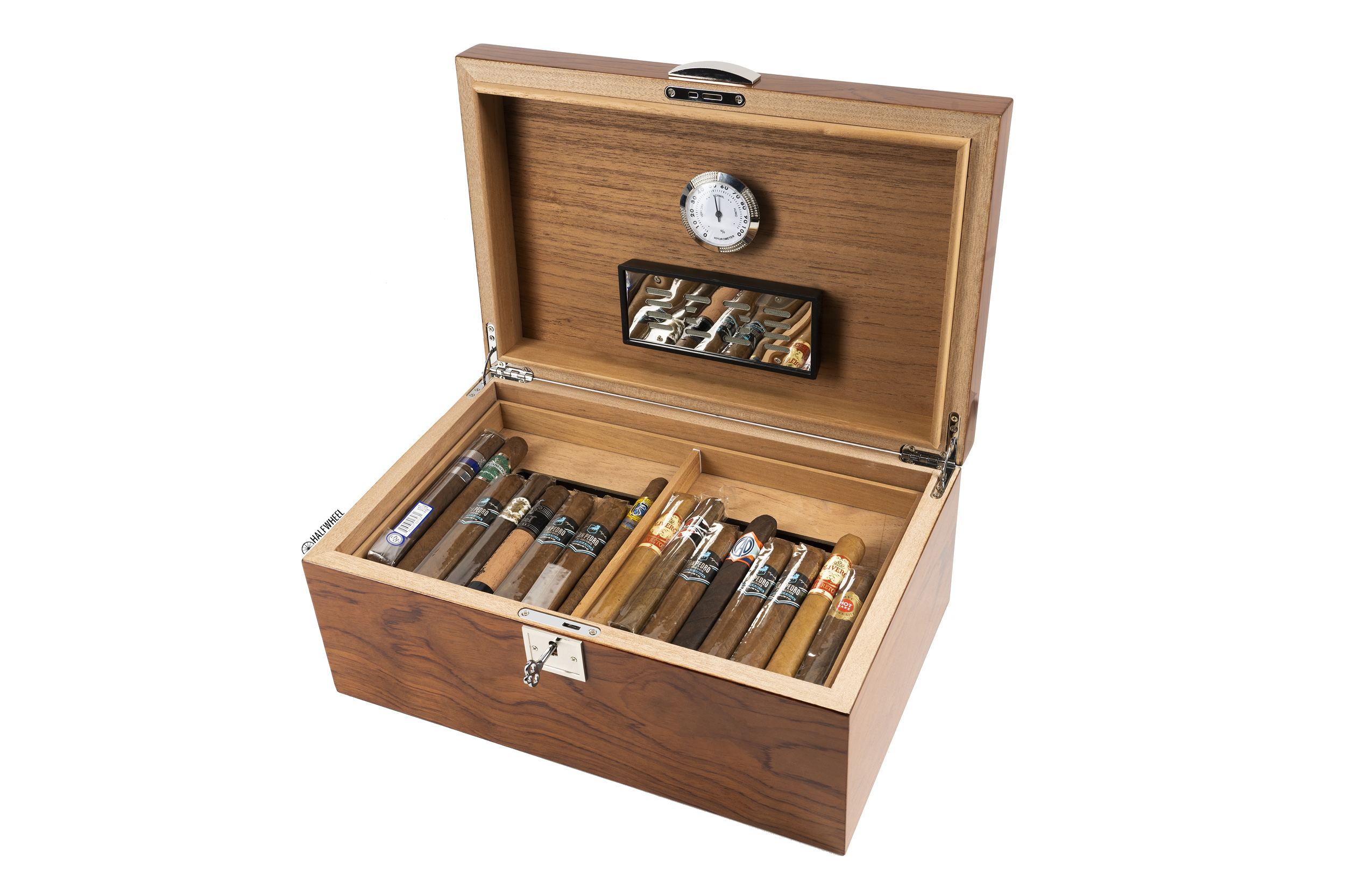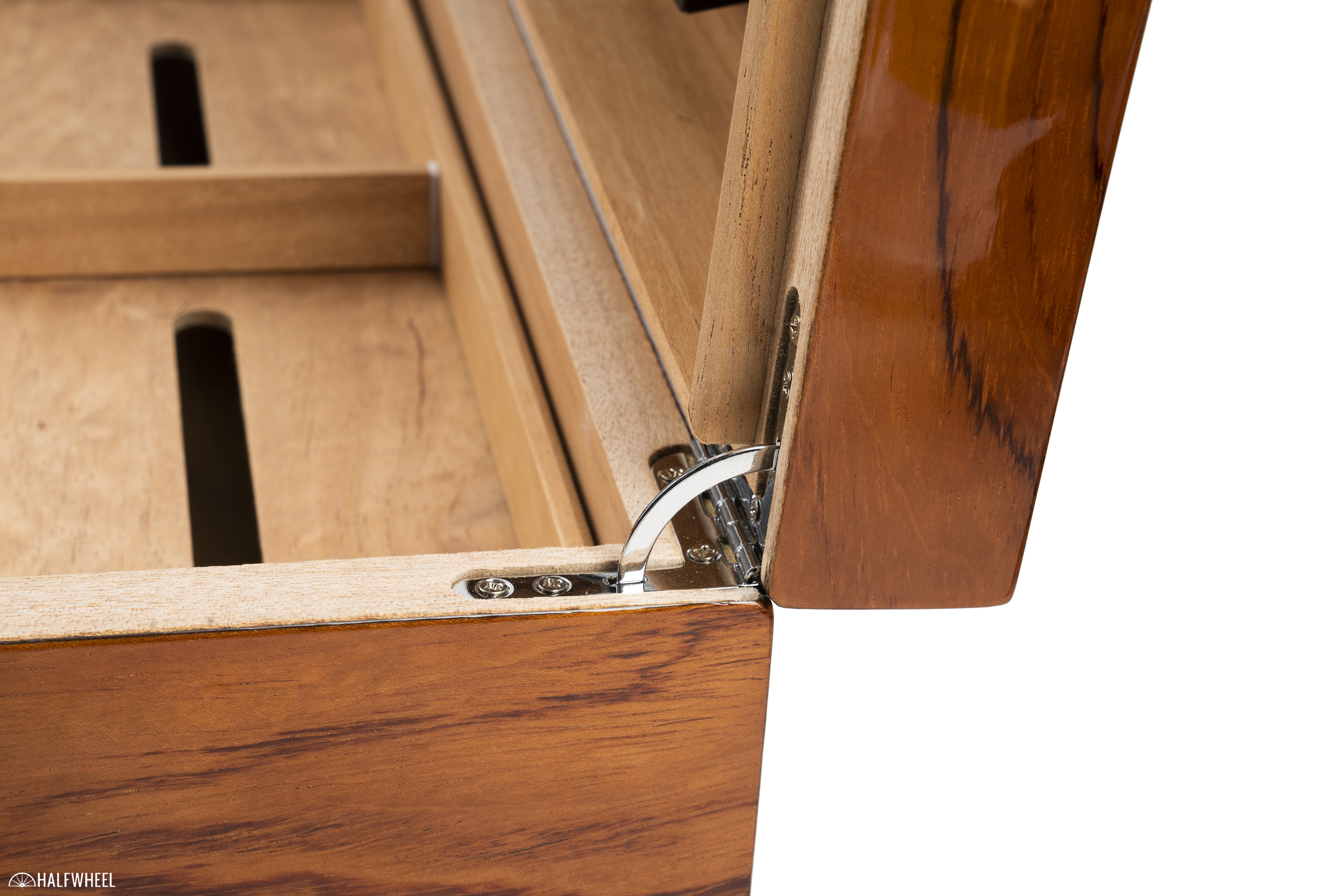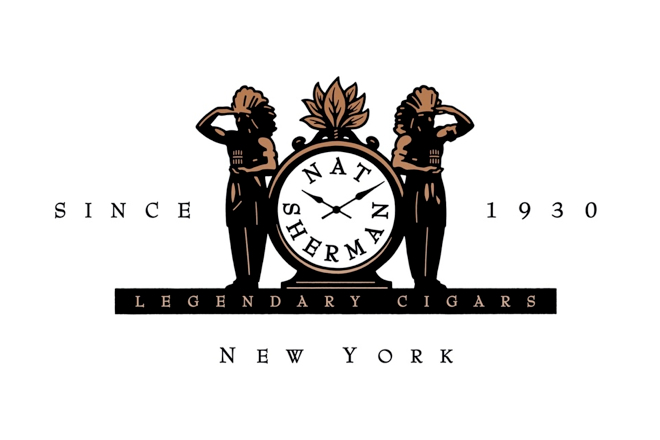This is the second in a series of seven humidor reviews that seek to find the best traditional humidor priced under $175.
More specifically, it’s about reviewing humidors that meet three basic qualifications:
- One that looks like a traditional wooden humidor, i.e. no plastic bins or acrylic humidors.
- One that is large enough to hold around 75 robustos, i.e. no travel humidors.
- Priced at no more than $175 before tax and shipping.
Given the qualifications, I’m not surprised that I have multiple models from two companies in particular; companies that most consumers are probably not familiar with: Quality Importers and Prestige Import Group. Both of these companies offer a number of Chinese-made humidors in all shapes and sizes, and at prices that are sometimes hard to believe.
If I wanted to, I could probably find 25 different models from these two companies alone that meet those three qualifications. As such, I tried to be selective about which ones to review and in the case of Prestige, that led to a safe choice and a bit of an interesting choice. For better and worse, today is the safe choice review.
WHAT IS IT?
The Princeton is a very standard humidor, offered in both Bubinga and ebony. The one being reviewed is the Bubinga, which is much darker in person than the promotional photos found on most websites. Prestige markets this as a 130-count humidor that measures 15 inches x 9.8 x 6.5—a capacity that may be possible with some crazy humidor Tetris. It weighs 8.49 lbs (3,850g) with the included accessories inside.
It’s a classic-looking humidor that features an external keyhole and a modern trim piece to help lift up the lid. There are no handles or inlets on the side, but the bottom does have a piece of black felt.
HOW MUCH DOES IT COST?
We paid $134.55 before tax and shipping.
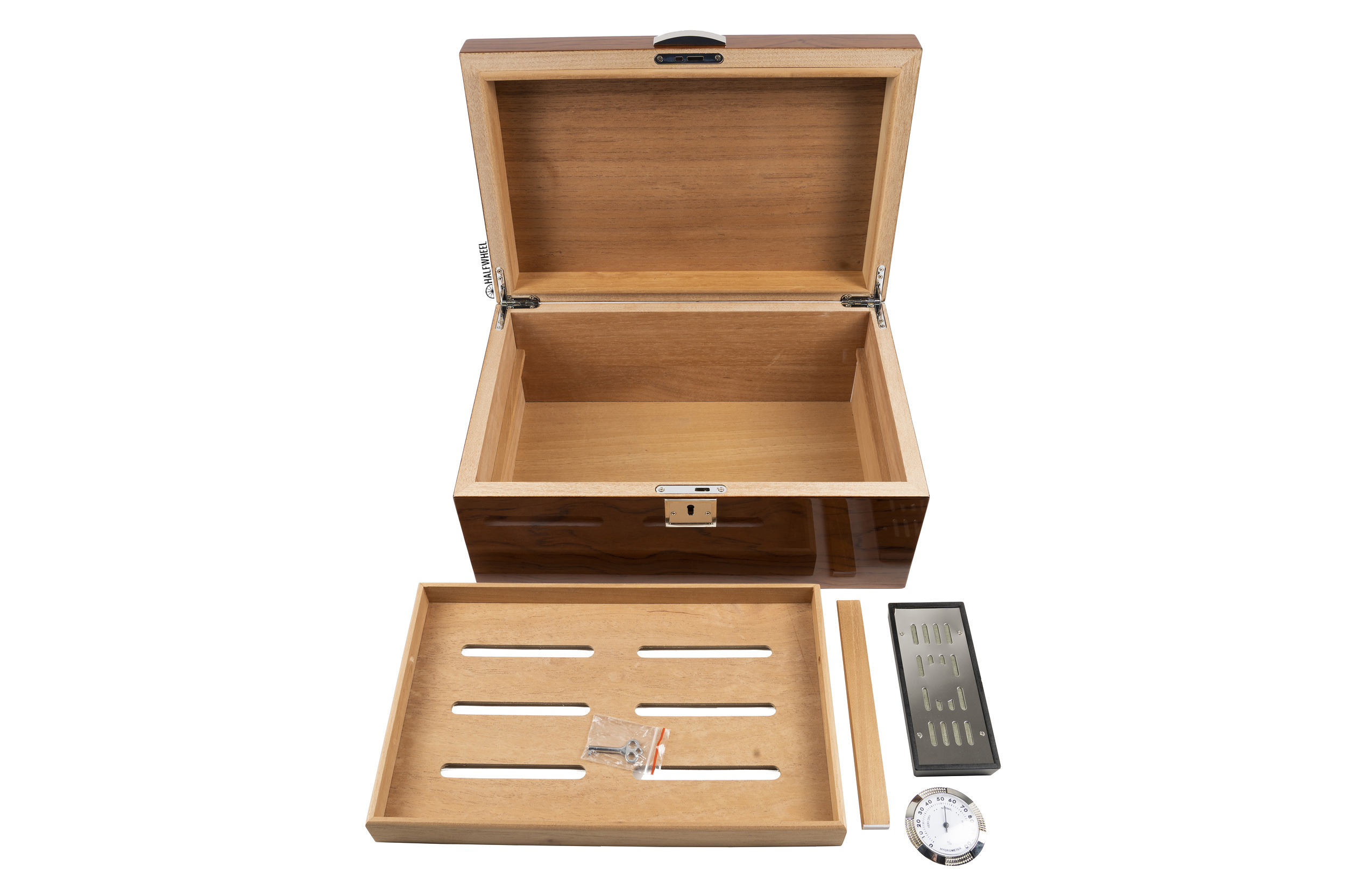
WHAT’S INCLUDED?
- The humidor
- A key
- A florists’ foam humidifier with magnetic back
- An analogy hygrometer with magnetic back
- A tray with a divider
I’m a bit surprised that the bottom part doesn’t come with a divider. Given that you are likely to put a lot more cigars in the bottom part, having a divider there is a lot more useful than having one in the tray.
As for the florists’ foam humidifier, here’s a brief explanation:
Florists’ foam is the traditional humidification method, it’s a green-colored foam that can also be used to keep plants hydrated, hence the name. Humidor manufacturers will place them inside of plastic or metal containers and then recommend you use some sort of combination of distilled water and propylene glycol. The use of propylene glycol—usually recommended in a 50/50 mixture with distilled water—is that it can help to reduce mold and, in theory, absorb excess humidity, specifically excess humidity over 70 percent relative humidity.
Over the years, I haven’t found this to be particularly effective and there seems to be some evidence that more propylene glycol is needed to maintain 70 percent relative humidity at 70 degrees Fahrenheit. For this testing, I used the regularly recommended 50/50 method.
HOW LARGE IS IT INSIDE?
The bottom part of the humidor measures 13.5 inches x 8.5 x 4.75. Per Humidor Discount’s humidor calculator, the 545 cubic inches of volume is good enough to fit 100 robusto cigars if optimized properly.
Of note, that number is a bit off because there are some small pieces of wood that are used to hold up the tray that will slightly reduce the space. That being said, those measurements don’t take into account the extra room in the lid, of which there’s roughly another half-inch if you are willing to stack the cigars to the absolute limit.
THE TESTING PROCESS
Given that I have seven humidors to compare against one another, I decided to come up with a testing process for all of them. I wanted to test the humidors both as they are sold and also with some of the variables removed so I could test the quality of the boxes themselves.
All humidors had a brand new and freshly calibrated SensorPush device inside for all parts of the test. The SensorPush is a digital device that measures both the temperature and relative humidity, and then sends that data to a smartphone app where it is stored on a minute-by-minute basis. (The SensorPush is not included in any of these humidors.)
The testing process is as follows:
- Seasoning — Two weeks of seasoning with a new sponge soaked in distilled water placed on a plate inside the humidor. The sponge was re-soaked after the first seven days and then removed once the two-week period was complete. Seasoning a humidor is a process to add moisture to the wood. If you don’t do this process, you run the risk that the wood will be dry and will suck the moisture from both the humidifier and the cigar. This can lead to months of frustration, and worse, dried-out cigars.
- Included Humidifier — Four weeks of using the humidor with the included humidifier with no cigars and without opening the lid. This is intended to test the humidor as the manufacturer sends it. Once this was done, I removed the included humidifier and moved on to step three.
- Boveda — Six weeks of using the humidor with three Boveda 60 gram packs (69 percent) with no cigars and without opening the lid. This is intended to test the humidor’s performance without the variability of how well the included humidifier works.
- Dry Cabinet — Two weeks of the humidor with nothing but the SensorPush inside placed inside of an electronic dry cabinet set at 36 percent relative humidity. The dry cabinet allows for me to control the ambient relative humidity, meaning that I can measure humidity loss without having to worry about how much of that is related to the change in the outside air. This is done to test how well the humidor seals. It was done without a humidification device to get a clearer picture of moisture loss.

SEASONING
For my last review, I didn’t need to mention this, but it’s worth pointing out here. What I think is worth pointing out is that for almost the entire last week—8 out of the 168 hourly checkpoints (4.7 percent)—the humidity was at 75 percent relative humidity or greater.
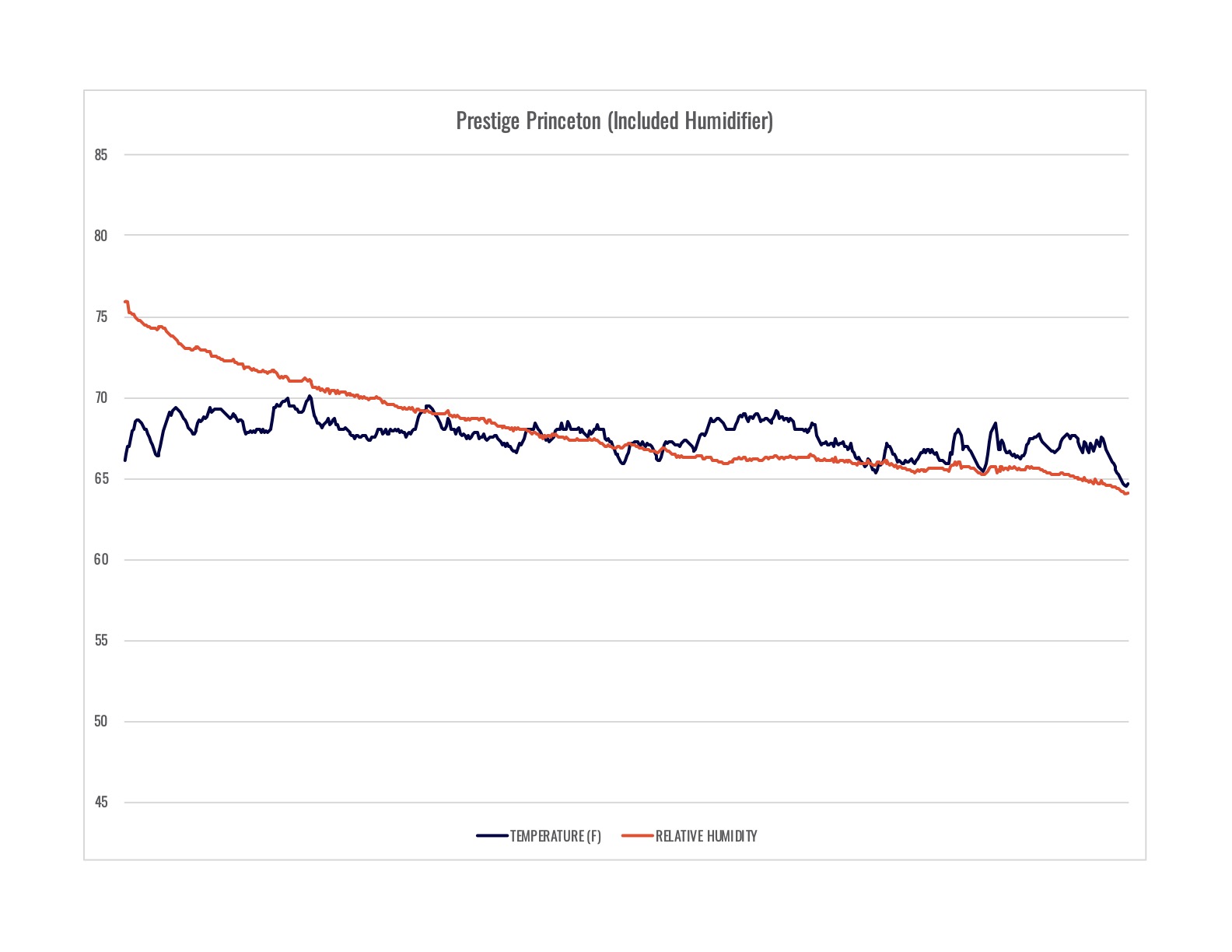
INCLUDED HUMIDIFIER
The seasoning data is important because of what happened next, the included humidifier didn’t seem to do its job. After starting at nearly 76 percent relative humidity, it took less than a week for the humidity to dip below 70 percent. The decline softened a bit, but it seemed like in the last few days of the included humidifier it was probably dry given how the curve was going.
For what it’s worth, the humidifier also developed mold.
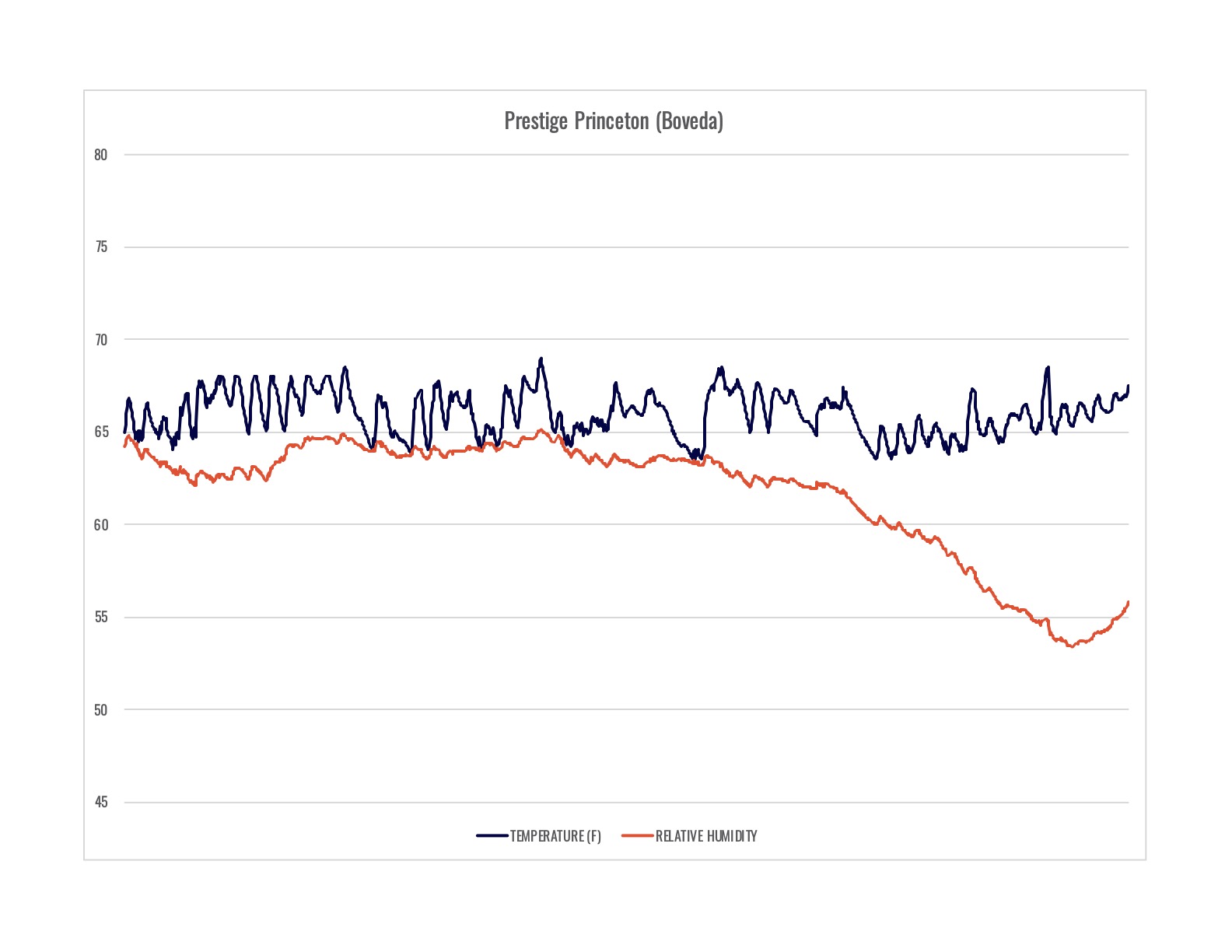
BOVEDA
If anything surprised me during the testing, it was how poorly the Bovedas were able to correct the lack of humidity after four weeks of the underpowered included humidifier. It’s quite clear that the humidor didn’t get properly seasoned in two weeks and the wood itself was drying. The Bovedas tried, but they never were able to get close to the desire 69 percent relative humidity.
What I found really weird was the Bovedas didn’t feel that dry coming out of the humidor. There was still some liquid in them, but they felt a bit more than halfway dried out by the end.
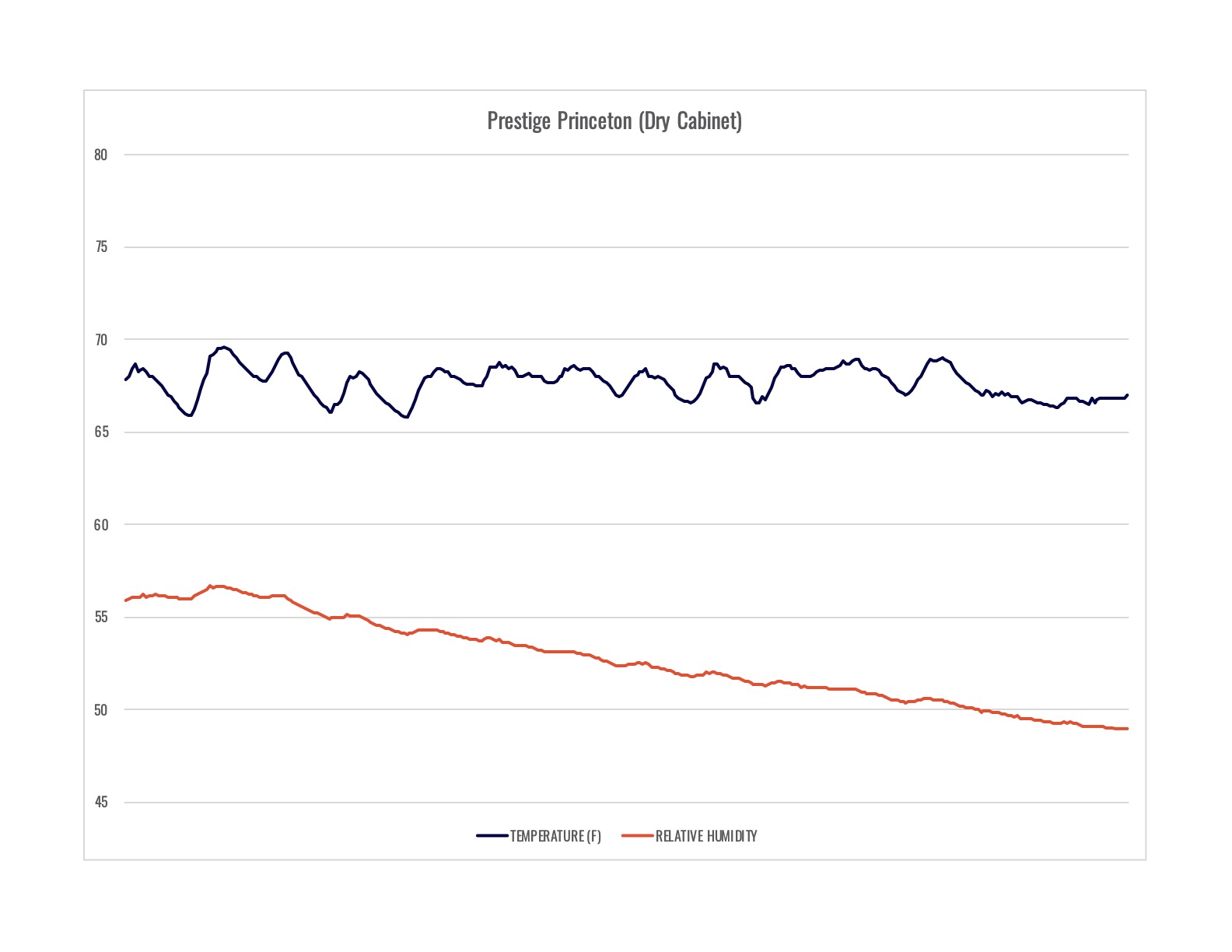
DRY CABINET
I’m not 100 percent confident about what took place, but what I think this shows is that the humidor actually seals decently, maybe even “well.” There’s certainly a decline, but it was only about 6.5 percent relative humidity. It’s also not clear just how humidified the wood was given the results from the included humidifier and Boveda.
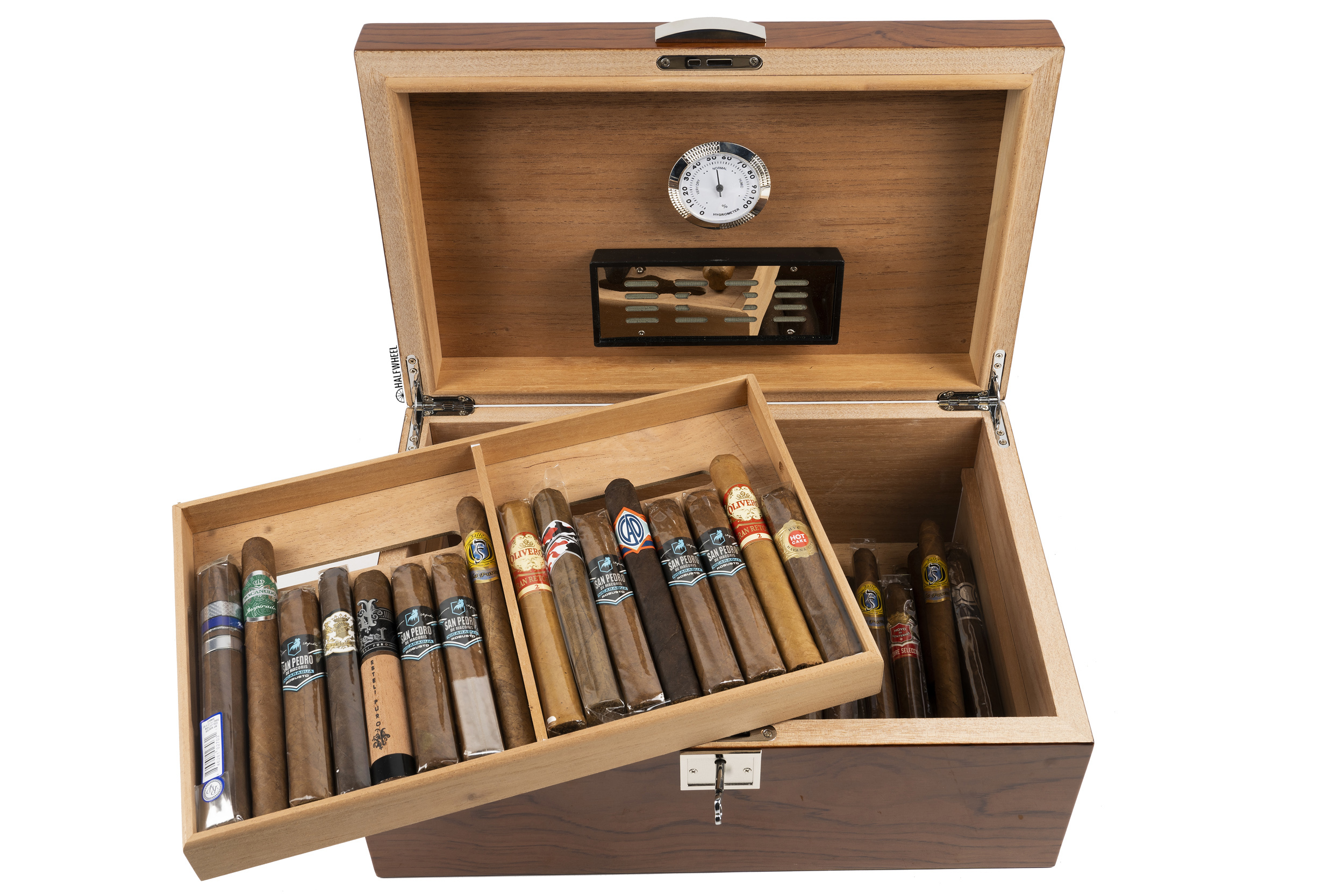
THE GOOD
- I Think This Humidor Seals — Despite poor performance on arguably the two most important testing procedures I’m inclined to think that the Prestige Princeton seals quite well. There are no visual signs that would suggest otherwise and that’s the easiest explanation of the admittedly odd data. A far as I’m concerned, at this price point the goal is finding the best sealing box with the understanding that the included accessories are likely to be pretty poor. If that’s the case, the Princeton is a very formidable competitor.
- It’s Large for the Price — This is not the best bang-for-the-buck storage solution, but it’s pretty good compared to the other humidors being tested for this series.
- The Entire Lid is Magnetic — This is one of those features that I feel like all desktop humidors should have these days. I certainly am not surprised that some of the competitors don’t have magnetic lids, but I’m surprised by how rare it is at this price point.
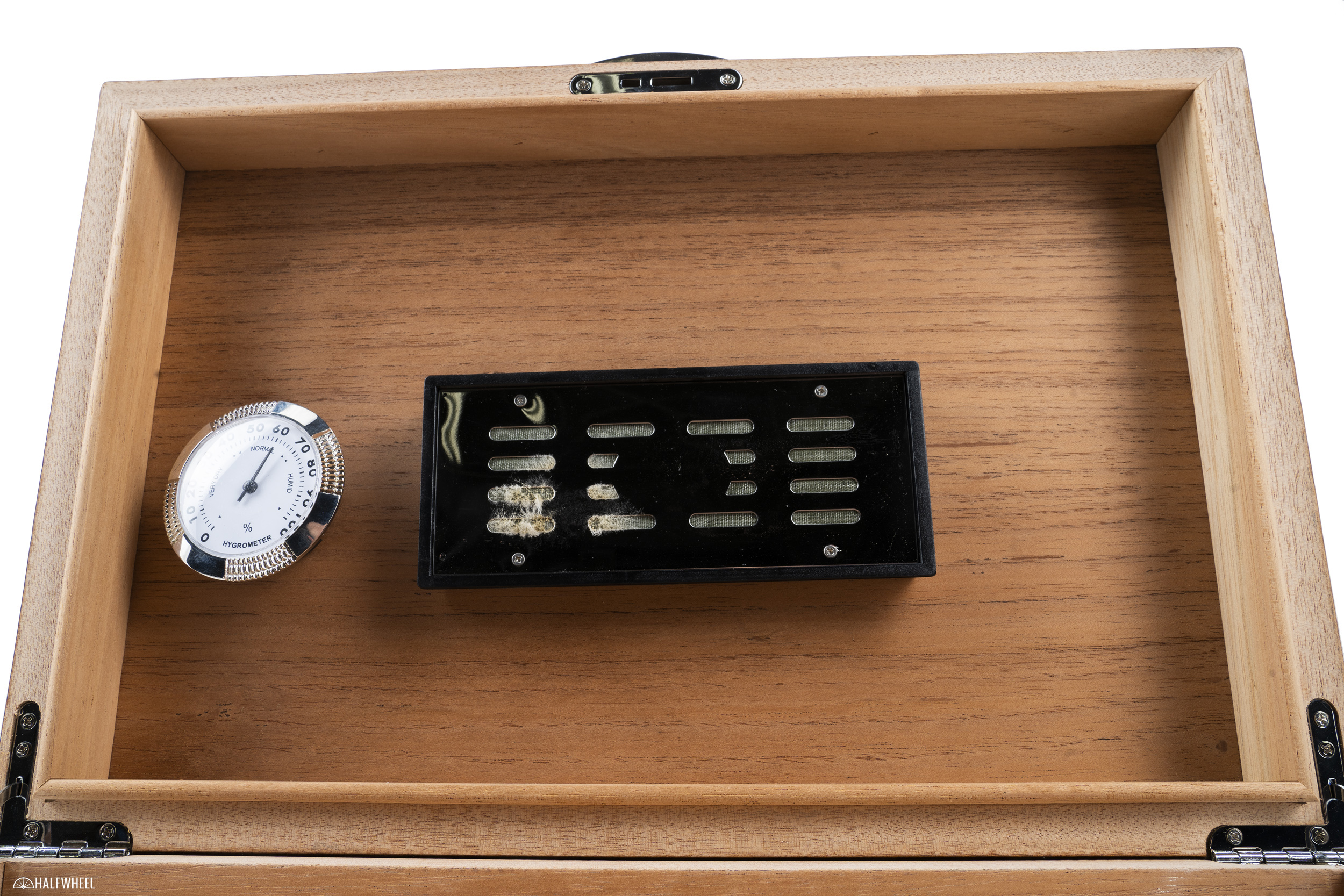
THE BAD
- The Included Humidifier Pt. 1 — I wouldn’t recommend using a florists’ foam humidifier because of the propensity for the humidifiers to over humidify cigars and in some cases develop mold, the latter of which happened here.
- The Included Humidifier Pt. 2 — Somehow despite developing mold, it seems quite clear the included humidifier isn’t that great it actually humidifying the unit. I think the easiest explanation is that a humidor this large probably needs two or three of the included humidifiers.
- The Included Humidifier Pt. 3 — To add insult to injury, when I went to fill the included humidifier with distilled water and propylene glycol solution, the excess liquid came out in a very bad brown color.
- The Included Hygrometer Fell Apart — I’m not really sure what happened, but at some point, the plastic piece that holds the magnet became dislodged from the actual hygrometer itself. This can be put back together, but that’s a pretty good sign of the qualify of the hygrometer itself.
- Fingerprints Galore — This humidor is a magnet for fingerprints. It’s not as bad as a mirror or a high-polished metal finish, but I’m not sure I’ve ever seen a wooden humidor have this many obvious fingerprints.
- The Fit Could Be Better — When you examine it closely you will realize this humidor isn’t the greatest in terms of the overall fit. On the exterior sides, the bottom and top pieces aren’t entirely aligned, something that isn’t terribly obvious visually but is immediately apparent once I run my finger down the sides. Inside the humidor, the two wooden pieces that hold up the tray are not remotely close to the same size, which isn’t that big of a deal but does speak to the level of attention and detail here.

THE COMPETITION
So far only three humidors have fully completed the testing process, so I don’t have a great baseline. I think the Princeton Prestige does the best job of sealing amongst that trio, but the jury is still very much out in a broader sense.
- Savoy Marquis ($111.95) — While I certainly don’t think this applies to every Savoy Marquis or Savoy humidors in general, the one that we purchased has a visible gap in between the top part and the lid. As such, I cannot recommend this humidor.
- Prestige Winchester ($149.95) — This is part of the sub-$175 humidor test. A full review is coming and I will update this review once that review has been published.
- Craftman’s Bench Havana 90-Cigar ($79.95) — See above.
- Yannabis Cigar Humidor ($159.99) — See above.
- Quality Importers Old World ($94.99) — See above.
- The Deauville Tobacco Leaf ($99.99) — See above.
- Boveda Large Acrylic Humidor ($180) — This humidor is just over the $175 price point but would otherwise be the recommended option. It’s a large, see-through plastic box with a removable tray that allows you to show off your cigars. More importantly, it’s plastic, which means you don’t need to worry about seasoning it and really don’t need to worry about the seal. It just works. The issue with the Boveda is that it just doesn’t look like what most people think of as a humidor.
- Colibri Heritage Humidor ($495) — If you want a wooden humidor that is going to last, I think you are going to want to spend closer to $400. The Heritage Humidor can regularly be found at that price point and it’s just so much better in just about every way. It feels solid, it avoids the major manufacturing flaws and it has a much more modern look, albeit one that isn’t for everyone.
SHOULD YOU BUY IT?
No.
The Princeton Prestige is probably very capable of producing better and passable data. I’m guessing that had I seasoned it for another two weeks, these issues wouldn’t present themselves. If I had just skipped the included humidifier test and gone straight to Bovedas, the data would be better. Even if I just did what most people did: put cigars in the humidor—it would have gone better. But there are other issues like the fit and the included accessories that mean I can’t recommend this humidor. Unlike some other products we’ve reviewed, I don’t think the Princeton is bad, but it just isn’t enough to garner a recommendation.

